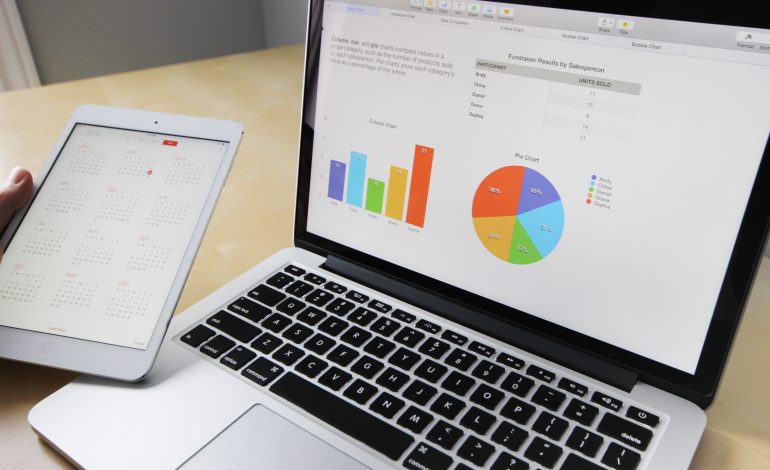The practice of putting information into a visual context, such as a map or graph, makes it easier for the human brain to absorb and extract insights from. The primary purpose of data visualization is to make identifying patterns, trends, and outliers in massive data sets easier. Information graphics, information visualization, and statistical graphics are all terms that are frequently used interchangeably.
Data visualization is one of the processes in the data science process that specifies that data must be visualized once it has been collected, processed, and modeled in order for conclusions to be drawn. Data visualization is also an element of the broader data presentation architecture (DPA) discipline, which aims to identify, locate, manipulate, format and deliver data in the most efficient way possible.
Data visualization is important for almost every career. It can be used by teachers to display student test results, by computer scientists exploring advancements in artificial intelligence (AI) or by executives looking to share information with stakeholders. It also plays an important role in big data projects. As businesses accumulated massive collections of data during the early years of the big data trend, they needed a way to get an overview of their data quickly and easily. Visualization tools were a natural fit.
Data visualization is feasible thanks to specialized data visualization software that graphically shows complex information. To display enormous datasets, they use various visualization forms such as graphs, charts, and heatmaps. As a result, rather of having to trawl through tables or reports full of raw metrics, you can easily analyze vast amounts of data.
Finally, these technologies enable you to swiftly grasp critical insights and make sound business decisions. Yellowfin, Microsoft Power BI, and Tableau are the greatest data visualization solutions on the market.
1. Better business decisions
Data visualization enables you to effortlessly create intuitive and interactive visualizations. Hence, you can quickly analyze complex datasets in your dashboards.
It helps you to easily find key insights. Data visualization software, like Yellowfin, Power BI and Tableau, simplifies the process of representing complex data in an easily understandable format for everyone using simple visual formats, like charts and graphs. People tend to understand visual things quicker than written forms, like reports.
By visually presenting the information in your dashboard, you can make complex data easily understandable and accessible for everyone.
As a result, the data visualization tool can enhance collaboration and communication in the decision-making approach. Also, it can significantly reduce imprecision in data. Hence, you can make significantly better business decisions, and grow your company.
2. Easier trend analysis and exploration
The best data visualization tools, like Yellowfin and Power BI, enable effortless trend analysis. They help you to quickly analyze current and historical events, and predict future events, like potential growth or decline of sales and revenue for the next year.
You can use different types of visualizations to perform trend analysis. Examples include the Area Graph, Line Graph, Histogram, Bubble Chart, Spiral Plot, and Steam Graph.
Read Also: What Jobs Use Predictive Analytics?
These solutions typically provide detailed dashboard and visualization design tools so that you can apply best practices to your chosen charts and graphs, such color, font, and rich media customization to make each visual custom-tailored for your intended audience – and visually appealing. Some tools, such as Yellowfin, provide a wide array of lesser available visualization types in addition to extensible tooling.
3. Identify correlation between operations and results faster
Correlation is one of the most important tools in statistics. It helps you to discover the relationships among independent variables through data visualizations.
In business intelligence, it is very important to find a correlation between business functions and market performance. It helps you to stay ahead in the competition, track connections between operations and overall business performance, and more effectively make important strategic decisions to beat the competition and grow your company.
4. More accurate customer sentiment analysis
Data visualization can help dig deeper into customer sentiments, presenting the analysis on interactive charts, reports, and dashboards rather than complicated and messy spreadsheets.
With graphs and charts, you can more easily understand and share insights with others into what people think about your brand, or how your business operations are performing as a whole. It allows you to get into the psyche of your target audience, understand their pain points and preferences, and utilize analytics to create significantly better business strategies.
5. Foster more business users to interact with their data
One goal of adopting and using visualization tools is to make the data accessible to everyone throughout the organization. By utilizing data visualization as part of your reporting efforts (and following best practices), it will encourage your users to explore and manipulate data to uncover important factors using said tools and foster a data-driven culture versus a traditional, intuition-based approach to making decisions.
Think of a scenario where you are seeing the sales of a specific item going down. There can be several reasons behind it. But which is the root cause? By using graphs and charts to represent your journey from identification to insight, you can more actively explore and correlate such a trend to actual item sales and a root cause, demonstrating the value of the solution overall to the enterprise and to your software users.
6. A window into automated reporting and contextualized data
Artificial intelligence (AI) and machine learning (ML)technologies can make information more understandable and useful. Powerful data visualization solutions, like Yellowfin BI and Power BI, support and integrate such technology into their visualization tools to improve the accuracy of results over time (via auto-generated comparisons, explanations, alerts and more).
Also, Yellowfin supports another important analytics feature, called Natural Language Query (NLQ). It helps you to create more accessible and usable business intelligence reports by understanding the context behind data, and shows you how to build the right question to ask of your data to look in the right places. It delivers data visualizations to the end-user following the best practices. As a result, you will get more actionable metrics from the datasets.


